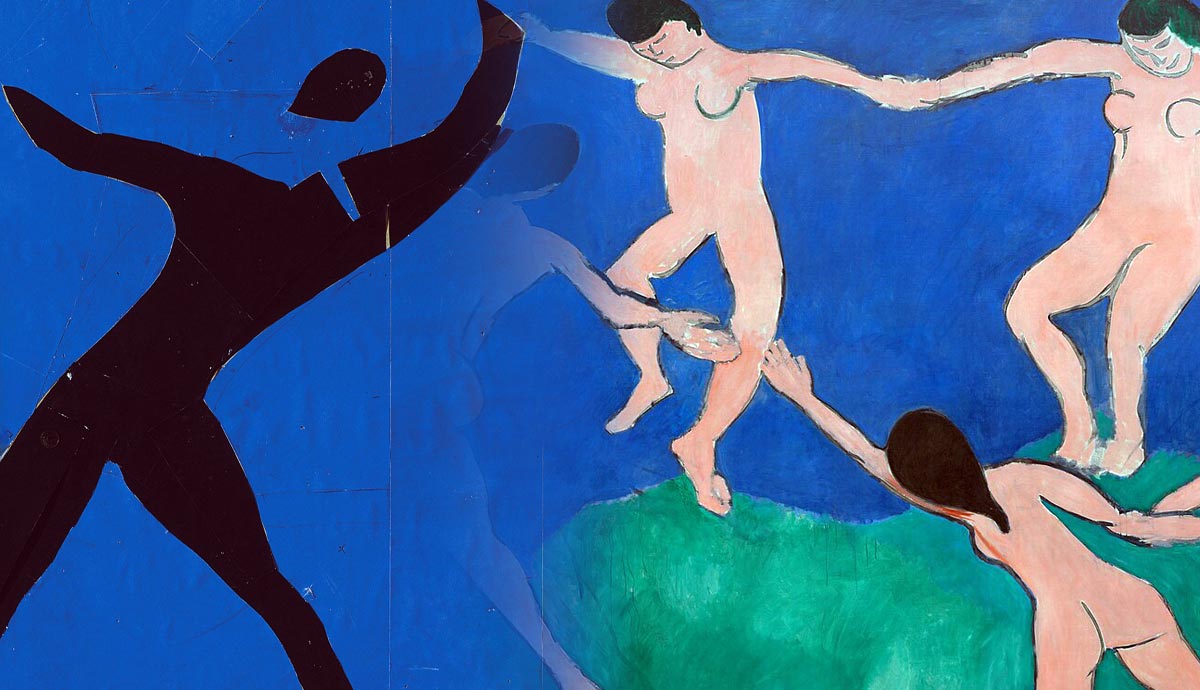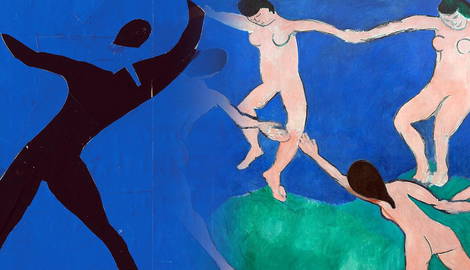
Like many other artists who are now considered pivotal in the history of modern art, Henri Matisse struggled to gain recognition and lived in poverty for a long time. Matisse himself did not think he had what it took to become successful. While trying to find his style, Matisse became the father of Fauvism. How did he end up revolutionizing visual arts, and why were his paintings so often laughed at? Let’s find out!
Henri Matisse: The Beginnings

Henri Matisse was born in Northern France to a loving, supporting mother and a rather harsh, rule-imposing father. As a child, Matisse was very rebellious which brought great disappointment to his father.
Matisse wanted to become a lawyer at first. However, everything changed after he suffered from appendicitis. His mother noticed that her son was fascinated by the man lying in the bed next to him in the hospital who was painting Swiss landscapes in oils copied from chromolithographs. So she brought him art supplies. Then and there, Matisse knew that he had to become an artist.
Henri Matisse’s First Mentors

Matisse’s first mentor was William Adolphe Bougeureau, an academic painter known for his realistic artworks depicting mythological and classical subjects. Matisse was working restlessly to catch up with other students. Nonetheless, Bougeaureu’s methods were not close to his heart. The mentor did not seem impressed by the student either. Bougeaureau even told Matisse that he wasn’t talented and that he could never become a professional painter. It was not until Gustave Moreau took Matisse under his wing that he truly opened himself to the world as an artist. Therefore, Moreau, an influential forerunner of symbolism, became an important figure in Matisse’s life.
Impressionism and the Bright Colors of the South

A turning point in his evolution as an artist occurred in Belle-Île, Brittany, when John Russell introduced him to the art of Vincent van Gogh and the ideas of Impressionism. Shortly after, Matisse became obsessed with Claude Monet’s technique, applying it to his own work. He also showed interest in the art of Paul Cezanne.
In Brittany, Matisse produced some highly impressive seascapes that Moreau, unfortunately, did not approve of. He considered them too abstract and simple. Nonetheless, Moreau supported Matisse and encouraged him to do whatever he wanted with his art.
Matisse was also inspired by his trip to Ajaccio in Corsica. The island opened a whole new world for him. People were nice to each other, they accepted Matisse as one of their own and opened their homes to him. He also discovered the bright colors of the South that contrasted with the cold, dull ones of the North. Matisse painted continuously during his stay there. Over the six months he spent in Ajaccio, he made 55 paintings that revealed his masterful use of colors. Until then, no artist dared to use colors as boldly as Matisse. He trespassed the traditional rules and the very definition of art.
The Misunderstood Colorist

As it turned out, this constant flow of work and the new direction Matisse took did not impress anyone. On the contrary, he struggled for a long time to gain recognition after returning from Corsica. The scandal known as the Humbert Affair centered around Matisse’s wife’s mother, Madame Thérèse Humbert, deeply affected the finances of the Matisses. The young artist was forced to give up on his colorful experiments. He started painting something that would please art collectors. These times were full of insomnia, frustration, and anger. Although he tried to return to conventional art so that he could sell something, art critics noticed that his true self never left the canvas, which created a dissonance. There was something that simply could not be concealed.
Divisionism and the Freedom of Collioure

Over a short period, Matisse turned to Divisionism. This is a Neo-Impressionist technique that implies dividing colors into separate dots or patches to produce brilliant luminosity. During his stay at St. Tropez Matisse was introduced to Divisionism by Paul Signac, one of the most dedicated Neo-Impressionist painters. Matisse had previously learned about Divisionism from Signac’s essay about it. Nonetheless, it was only during his 1904 trip to St. Tropez that he mastered the technique. Before that, his attempts were based solely on theory.
Although Matisse dropped the Divisionist technique shortly after, it served as the long-awaited bridge to his artistic style. In fact, after returning to Paris from St. Tropez, Matisse painted Luxe, Calme et Volupté using the Divisionist technique which is now considered the starting point of Fauvism. Another turning point in Matisse’s development as an artist occurred in Collioure. There, he felt free enough to paint just the way he wanted to. No one in Collioure knew anything about art. There was no one to impress and no one who could criticize him.
Fauvism and Its Aftermath

The Fauvist period did not last very long. Les Fauves (or Wild Beasts) held only several exhibitions, which were harshly criticized due to their noticeable brushstrokes, vivid colors, and simplified forms that had nothing to do with reality. Nonetheless, their approach revolutionized the Parisian art world and laid the foundations for other emerging art movements in modern art.
Although Matisse gained some respect over the years following the Fauvist exhibitions—particularly from Leo and Gertrude Stein, as well as their sister-in-law, Sarah Stein, and Sergei Shchukin)—he was still quite unpopular in French artistic circles. After the Fauves disbanded, Matisse continued to develop his own style without following any rules or concepts. He instead focused on instinct and feelings.

Sergei Shchukin, one of the most important advocates of Matisse’s art, commissioned some of Matisse’s most famous paintings: Dance and Music. The artist even traveled to Saint Petersburg to oversee the installation of the paintings. He was surprised to see that people were quite fond of his art there. Having been deeply disturbed by the audience’s reaction in France after the Fauvist exhibitions, Matisse was touched by the Russians’ reaction to his works. Thanks to Shchukin’s orders, he was also in a slightly better financial situation now. He decided to use his resources for traveling.
The Turmoil of the 1920s and Matisse’s Odalisques

Many sources mention that in the 1920s, Matisse started painting rather calmer, more peaceful, and less bold pieces. Hilary Spurling writes, “It would take sixty years or more for this hidden emotional residue–the disturbed and disturbing feelings described in Matisse’s correspondence at the time–to become palpable in paintings that portray on the surface a carefree existence or ease and leisure.” She continues by quoting J. D. Flam: “Canvas after canvas is filled with images of boredom, claustrophobia, alienation, and sexual yearning.” Much of Matisse’s life and inner turmoil remained in the dark until decades later.

Between 1920 and 1933, Matisse traveled to Nice, London, Etretat, America, and Tahiti. However, he spent most of his time in his studio in Nice, focusing on exploring patterns through painting odalisques. In 1952, he told André Verdet: “The odalisques were the bounty of a happy nostalgia, a lovely vivid dream, and the almost ecstatic, enchanted days and nights of the Moroccan climate. I felt an irresistible need to express that ecstasy, in corresponding colored rhythms, rhythms of sunny and lavish figures and colors.” His odalisques were not well-received at the time.
Henri Matisse’s Late Years

With the onset of World War II, Matisse’s health started declining. This culminated with his cancer surgery in 1941. The complications that came with the surgery almost killed him. Bedridden and tormented, he painted less and less in the following years, eventually turning to his cutout pieces, scissored out of paper. Matisse had already experimented with cutouts while designing the decor for The Nightingale and the costumes for Sergei Diaghilev’s Ballets Russes. However, it was not until 1941 that he managed to outline his own cutout technique and form. His cutouts would be later used in designs for the Chapelle du Rosaire de Vence. The cutouts marked another pivotal phase of his career which was also his last one.









